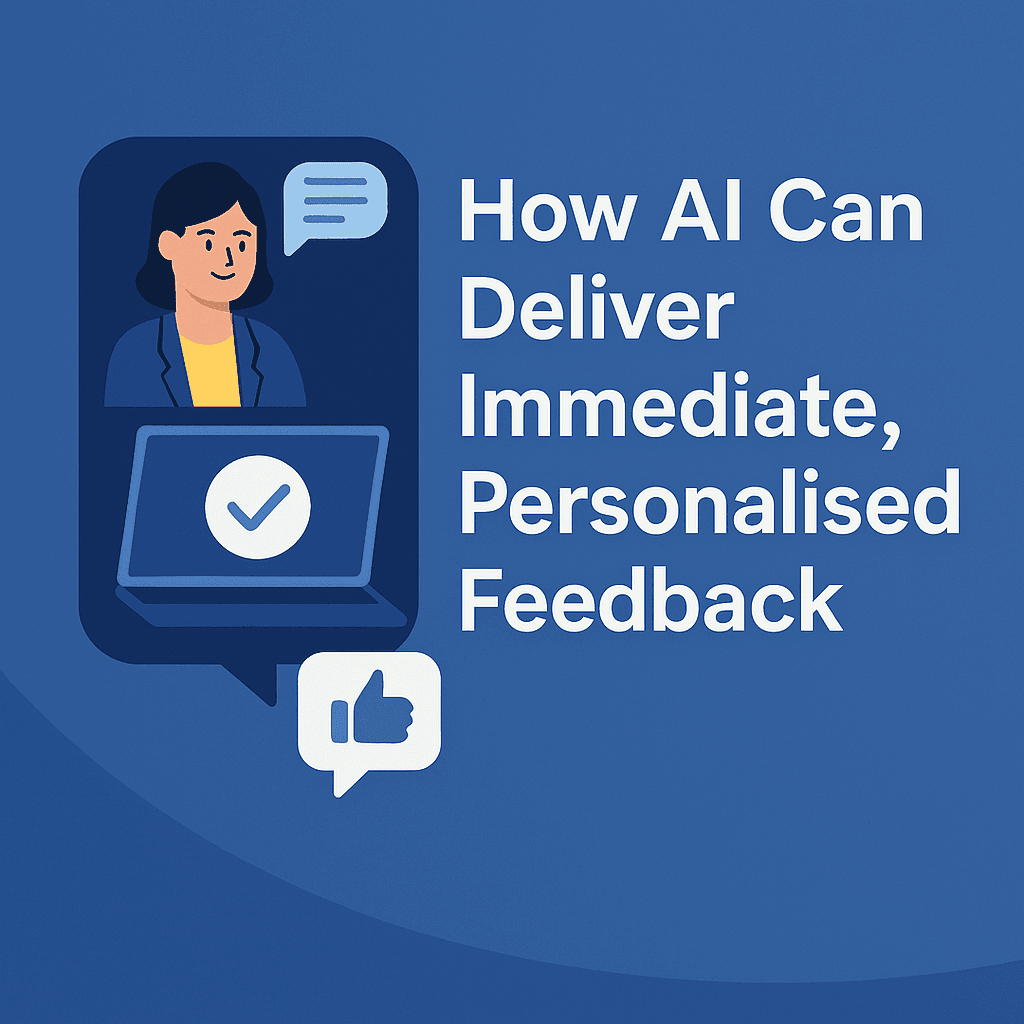AI can deliver immediate, personalised feedback, transforming how educators support student learning and engagement. In traditional learning environments, feedback often arrives days or even weeks after an assignment is submitted. While it can still be valuable, this delay often limits its impact. Today, artificial intelligence is changing the game—enabling educators to provide timely, actionable, and highly customised feedback that directly addresses each student’s needs.
With advancements in natural language processing (NLP), machine learning, and adaptive learning systems, AI can deliver immediate, personalised feedback through digital platforms at scale. Whether it’s automated suggestions for essay improvements, hints on incorrect quiz answers, or learning path recommendations based on performance, AI tools are now capable of replicating—and sometimes enhancing, the personal touch of a one-to-one tutor.
Case Studies: Paving the Way for Inclusive Education
The Power of Real-Time, Personalised Feedback
The main advantage of AI-driven feedback is its timeliness. Rather than waiting for the next class or grading session, students can receive feedback the moment they complete a task. This type of feedback is not only faster but also more relevant, as it is delivered at the point of learning—when the student is most receptive to it.
Moreover, because AI can analyse a learner’s responses, behaviour, and history, the feedback becomes personalised. Instead of a generic “good job” or “try again,” students receive specific, targeted guidance that addresses their individual strengths and weaknesses.
Examples of How AI Delivers Personalised Feedback
1. Grammarly for Academic Writing
Grammarly is a popular AI-based writing tool that provides instant feedback on grammar, style, clarity, and tone. In academic settings, students use Grammarly to revise their writing in real-time. The tool not only corrects mistakes but also explains why a change is recommended—helping learners understand and improve.
2. Khan Academy with GPT Integration
Khan Academy’s integration with GPT-based tools enables students to receive detailed, conversational feedback on mathematical problem-solving or concept exploration. For example, if a student solves an equation incorrectly, the AI tutor provides step-by-step guidance to identify and correct the error.
3. Gradescope for Assignment Marking
Gradescope uses AI to assist educators in marking large volumes of assignments. It groups similar responses and allows batch feedback. This not only accelerates the grading process but ensures that all students receive structured, specific feedback aligned with assessment rubrics.
4. Century Tech’s Adaptive Learning Platform
Century Tech leverages AI to track student learning behaviour and recommend activities tailored to each learner’s progress. After each quiz or lesson, the system generates automatic feedback and adjusts future recommendations accordingly.
How AI Improves Learning Outcomes
1. Increased Engagement
When students receive prompt, relevant feedback, they are more likely to stay engaged. They feel that their efforts are recognised and that support is immediately available.
2. Enhanced Self-Regulated Learning
AI-powered tools enable learners to take charge of their learning. When students can understand where they went wrong and how to fix it—without having to wait—they become more independent and motivated.
3. Efficient Use of Teacher Time
While educators remain essential in interpreting student needs and delivering complex feedback, AI tools can handle routine tasks. This allows teachers to focus on higher-order thinking and personalised interactions.
4. Continuous Progress Tracking
Many AI systems include visual dashboards where students and educators can monitor learning over time. This data-driven approach allows for timely intervention and improved academic support strategies.
Limitations and Considerations
Despite the benefits, there are a few limitations to consider:
- Over-reliance on automated tools may reduce critical thinking if not properly balanced.
- Feedback tone from AI can sometimes feel impersonal, which may affect learner motivation.
- Language and cultural context may influence how AI-generated feedback is received and understood.
- Privacy and data security must always be addressed, especially in educational contexts.
To address these, institutions should maintain a human-in-the-loop approach—combining AI tools with teacher oversight, contextual judgement, and pastoral care.
The Future of Feedback with AI
As AI continues to evolve, we can expect even more refined tools capable of understanding context, emotional tone, and multimodal input (e.g. speech, handwriting, visuals). Soon, AI tutors could engage in real-time spoken conversations, offering feedback based not only on academic accuracy but also on student sentiment and engagement patterns.
Ultimately, AI can deliver immediate, personalised feedback that not only supports academic performance but also fosters a more meaningful, student-centred learning experience.
Visit The Case HQ for 95+ courses
Read More:
The Influence of Case Studies on Corporate Social Responsibility
Case Studies in Cybersecurity: Lessons Learned
Leveraging Case Studies for Community Development
The Rising Importance of Case Studies in Climate Change
Case Studies in HR: Shaping the Future of Work
Innovative Practices: How Case Studies Influence Product Design
Case Studies in Economics: A Closer Look
AI in Early Childhood Education: Promises and Pitfalls
How AI is Shaping the Role of Educators in the 21st Century
AI and Special Education: Customizing Learning for Every Student
The Art of Crafting Compelling Case Studies: Tips for Success



Responses